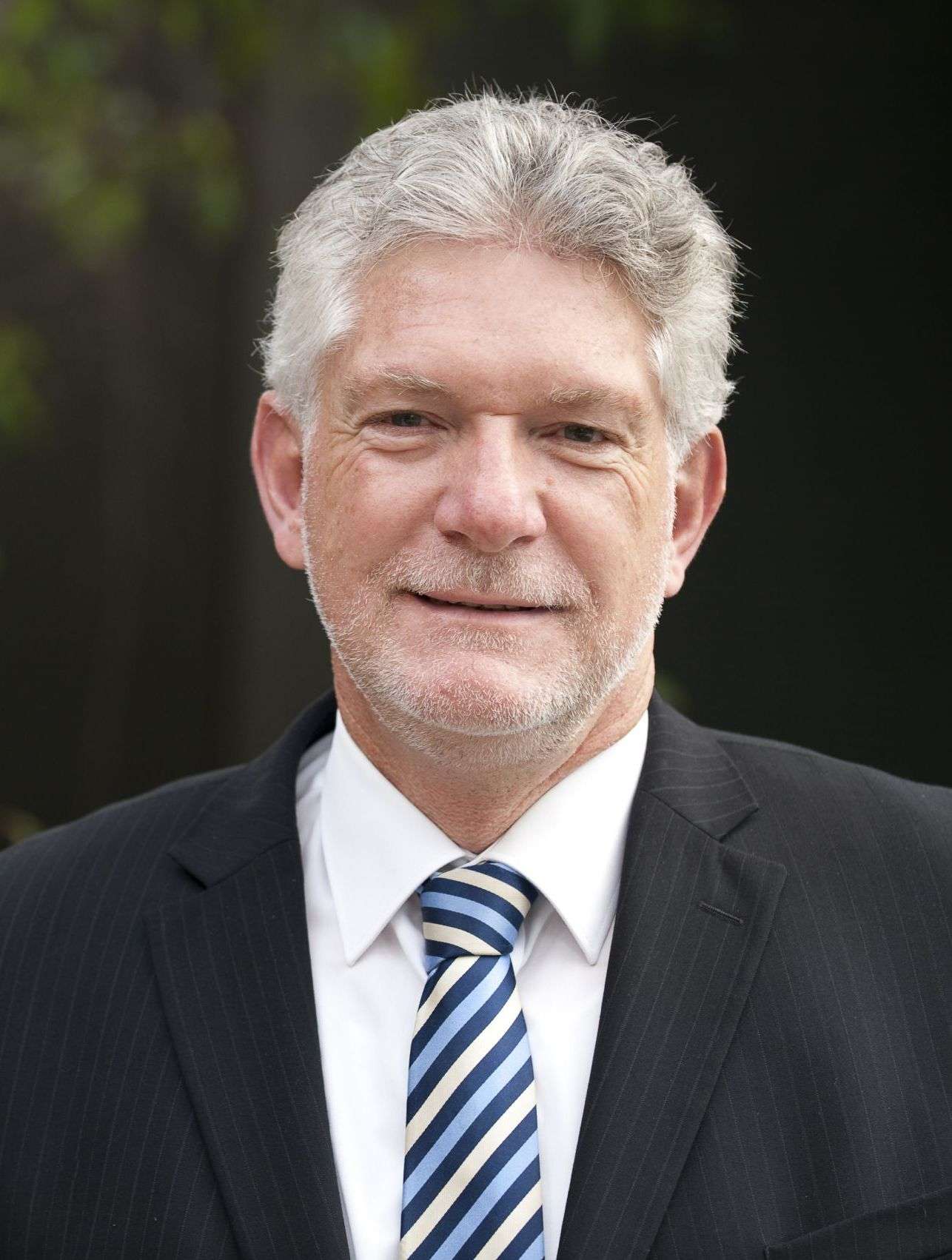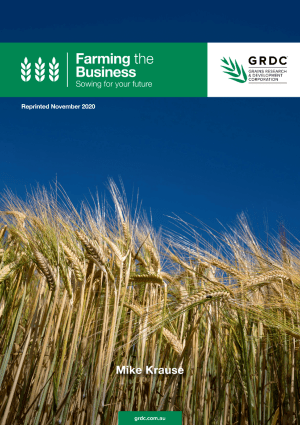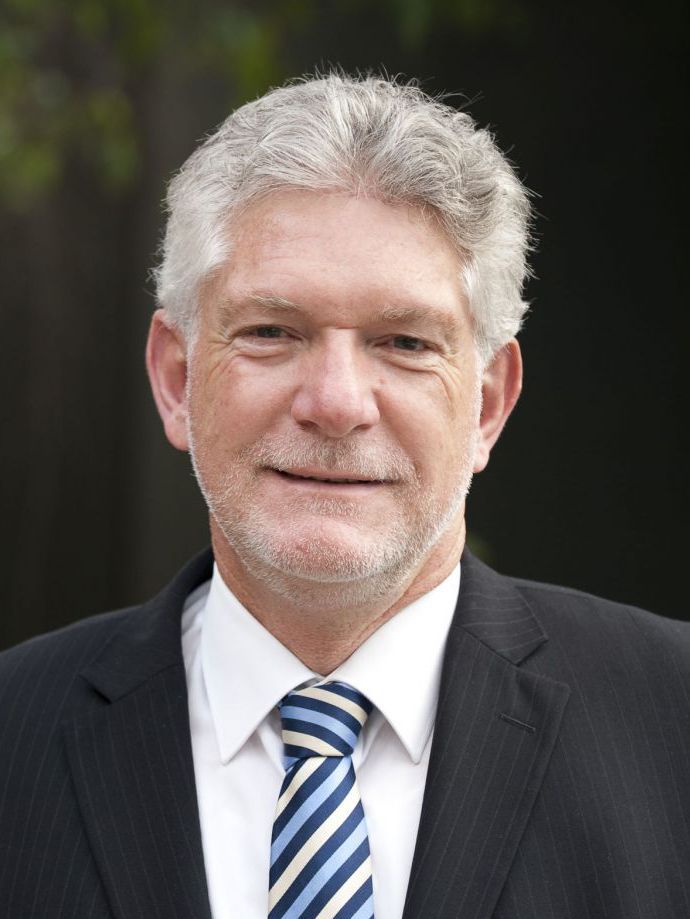
In 2022, farmers experienced significant increases in interest rates, important input costs, particularly fertiliser, chemical and fuel, and changes to their commodity prices. While changes to these important components of the farming business are common, we haven’t experienced these large increases for some time.
It’s important to be informed on what changes might be expected in 2023 so that we can be proactive in our planning for the coming season. Darryl Gobbet is an experienced economist with the rare ability to communicate clearly on these complex issues. He will provide you a background to what is driving these changes and what 2023 may hold for us.
Economic Outlook for 2023 with Darryl Gobbett
Mike Krause:
Welcome, Darryl, to Your Farm Business Podcast. Darryl is a really well known economist, both in banking and in private sector, and has been one of our popular contributors to this podcast series. We've just challenged Darryl to have a look at the economic outlook for this coming year, given that we've experienced a lot of change in the last 12 months, with the impact of the Ukraine War, and I guess the tail end of COVID, but it's released a lot of uncertainty. So Darryl, welcome, and look forward to your insights.
Darryl Gobbet:
Thanks, Michael.
Mike Krause:
Where would you like to start? Interest rates?
Darryl Gobbet:
Perhaps we could look at commodity prices, because there's been a major series of changes over the last 12 months as a result of what's happened with... Well, first off, back in 2021 when we were starting to come out of COVID, economies were starting to take off, so commodity prices were starting to lift, and then we had the Russian invasion of Ukraine and all the impact that's had, particularly on agricultural prices, but also more broadly. And we spoke a bit about the logistics impacts, particularly on fertilizer, in that early period, because Russia … Belarus are major providers of urea and phosphate. The interesting thing is, a lot of the commodity prices are now back to the levels they were prior to the invasion. So farmers should be-
Mike Krause:
The world's got used to the supply and demand change.
Darryl Gobbet:
Yeah. Now, some of that will have been a reduction in demand because of the very high prices for a lot of those fertilizers and also for energy. So there's been a reduction in demand, and we spoke a bit about that in the last podcast, where people were already talking about, say, reducing the acreage or reducing the amount of fertilizer they were going to apply.
Darryl Gobbet:
I think it's really quite interesting that the world has adjusted, and farmers should hopefully start to see some benefit in their fertiliser costs, particularly with the Australian dollar now back at 70 cents. So the Australian dollar has actually gone up over the course of 2022 and this morning went through 70 cents, and oil and gas prices have come off, although I know there's some very interesting things going on there, which we can talk about a bit later.
Darryl Gobbet:
But oil prices have come down, and particularly Russian oil prices because of the sanctions, the embargo that's been put on Russian oil. Russian oil is now probably 30 to 40% below what the cost of oil, say, West Texas Intermediate or Brent type prices, the international market prices are. Russia is now really starting, I think, to feel the impact of the sanctions on some of their major exports. But I think the issue for commodity prices and the way it's impacted consumer prices through the course of the year, and last time we spoke, the Reserve Bank was saying wasn't going to be any interest rate rises for a couple of years, and bang, within a couple of weeks-
Mike Krause:
It happened.
Darryl Gobbet:
... it jacked them up, partly because their inflation forecasts were thrown out the window because of the commodity price issues and also the delayed impact of floods in Australia on fresh fruit and vegetable prices. And that's where now there's this real battle on in terms of where commodity prices are headed. As I said, most of the agricultural commodity prices are now back to where they were, including wheat, back to where they were prior to the Russian invasion. Energy prices are coming back.
Mike Krause:
You expect those commodity prices then to remain normal?
Darryl Gobbet:
I think they're going to remain, particularly wheat... And again, this I think is an interesting issue for what's been going on. Russia has had a record wheat crop. Canada's had the third biggest wheat crop it's ever had. Australia could well have another record wheat crop.
Mike Krause:
Yeah, great production.
Darryl Gobbet:
Global production is pretty close to record levels. Global consumption is matching it. So stocks are pretty line-ball with where they were 12 months ago.
Mike Krause:
Is Russian wheat coming into the market too?
Darryl Gobbet:
Well, they're talking. And again, this is part of the logistics issue, because there's embargoes on Russian wheat being bought in the developed world, but Russia's selling plenty of wheat into countries like India, Africa. And you're seeing in fact they're talking, the US Department of Agriculture is projecting that Russia will have record wheat exports in 2022 when the numbers come in. Really quite amazing what's going on out there. The commodity prices that are really staying high are in those new areas such as lithium. The price of lithium is now about five to six times what it was back in 2021, 2020, because of the demand for the batteries.
Mike Krause:
So that's a reflection of modern technology looking for those sort of minerals.
Darryl Gobbet:
Yes. Then we've got some other areas, and again I'm not sure how many of your listeners would relate to this, but in the United States, the wholesale price of eggs has gone from about $1 a dozen to now $4.60 a dozen wholesale.
Mike Krause:
So their inflation has been worse than ours?
Darryl Gobbet:
Yep, their inflation is worse than ours. And the big issue for interest rates there is how quickly inflation will come down in the United States. It looks as if it's probably going to be a bit lower than ours to the end of 2022. Probably will come down a bit faster. They have another issue. Just as we had a real boot to inflation with the floods in New South Wales, Victoria, Queensland early in 2022, the Americans are facing a bit of the same thing with the floods you may well have seen spoken about in California. I saw a report, California produces something like 40% of US food, I think they're only talking about more of the fruit and vegetables, and is their major nut producer. So they could well have a bit of an issue on the lettuces and fresh fruits, stuff like that, which will be flowing through into consumer price indexes in the United States over the next couple of months. So they could well have the same flood-related issue for inflation as we had back in 2022.
Darryl Gobbet:
But anyway, the interesting thing about the United States, and it really drives global interest rates and we spoke about this a little while ago, is that in the United States they have a cash rate now equivalent to the Reserve Bank's cash rate of 4.25% to 4.50%, so they set a range. Their 10-year bond rate is 3.5%, so they have what's called an inverted yield curve. 10-year money is now cheaper for the federal government in the United States than is the cash rate. And I think there seems to be this real dichotomy in the United States now between the Federal Reserve, its forecasts of when inflation's coming down, and the markets. The markets, I think, are actually much more aggressive in terms of expecting inflation to come down more quickly than the Federal Reserve is, and therefore it's pricing in really very little further growth in official rates and inflationary expectations remaining quite stable.
Darryl Gobbet:
And one of the things to look at in terms of inflationary expectations is the gap between the 10-year bond rate as set in the market, which is 3.5%, which is actually down over 0.3% since Christmas. So interest rates, long-term interest rates in the United States are falling. The cash rate is expected to go up, but markets' long-term expectations about inflation are still anchored pretty well around about 2%, 2.2%, whereas their inflation rate is well over 7%. Again, they're being affected by the economy coming out of COVID.
Darryl Gobbet:
Goods prices in the consumer price index and wholesale prices are almost static now for the last couple of months. It's their services prices, so restaurants, people going out to dinner, that type of stuff, insurances, that's where the inflation is. And so the Federal Reserve is saying we need to get services inflation down, which is very heavily driven by wages, which are growing more quickly in the United States now than they're in Australia. And so there's this real battle going on, which we'll see play out over the next six months. It could well be we are getting close to the top of US interest rate rises in the cash rate.
Mike Krause:
And does that mean we're getting close to that as well, or we're a little bit delayed from that?
Darryl Gobbet:
We're probably a little bit delayed, because our bond rates here are still above the cash rate, which is 3.1% in Australia. But it could well be that in the US the markets see interest rates coming down through the course of 2023 rather than continuing up. And that could well be one of the reasons why the Australian dollar has actually moved up so much over the last couple of weeks literally, because it could well be there's expectations that US interest rates are starting to get near their peaks, but there's a bit further to go for Australian interest rates because of our inflation performance.
Darryl Gobbet:
And the Reserve Bank is forecasting consumer price inflation to peak at around about 8% per annum in the December quarter, which has passed, and then start coming down. So there's some really interesting issues going on out there, but it could well be we're getting close to the top of interest rates in the United States. We've got a little bit further to go here, but if you start to see interest rates coming off in the United States, then through the first half of 2023, could well be the Reserve Bank might well start to say, well, we'll wait rather than continue to push rates up.
Mike Krause:
So Darryl, if farmers are looking at perhaps refinancing or they've gone out to buy a neighboring property and they've got a decision to make about, do we lock interest rates in, take a long-term view of it, or do we take short-term interest rates, which sounds like they're a little on the high side and potentially will come down when our inflation gets under control and coming down, would you be tempted to take a long term?
Darryl Gobbet:
I don't see us getting back to those very low interest rates that we had early last year. That's probably-
Mike Krause:
That's history, then.
Darryl Gobbet:
... a stretch too far. But even in Australia, if we look at the three-year bond rate, the federal government bond rate, 12 months ago, that was 3%. It got to a peak of 3.5% end of December, and now it's at 3.2%. So it's actually come off the last couple of weeks. I reckon they need to talk to their banks to see what type of spread margin they're paying over the wholesale cost of funds, the farmers, and seeing whether if they could get at a decent rate as a spread over the bond rates or the bank's costs of funds, it might be worthwhile, I think, starting to lock in some of those fixed rates, because we just don't know where interest rates are headed, and the world, despite having come out of COVID, it's moving into a period, I think, of much bigger budget deficits than we've seen before.
Mike Krause:
There'll be a lot of competition for funds.
Darryl Gobbet:
There's going to be, and that's why my view would be we're not likely to see a significant drop in these long-term rates, but they're holding down, and expectations are already built in about these budget deficits coming through. One of the areas of significant rises in the budget deficits is the increased defense spending. That's happening right around the world, particularly in Europe. We are seeing, for example, in Germany, where they would spend perhaps about 1%, 1.25% of gross domestic product on defense, they're now talking 2%, 2.5%. Same thing's up for the United Kingdom, and we are going to see it in the United States.
Darryl Gobbet:
So I think that spending on the defense side of the economy is going to lift quite strongly, at the same time as we've got the other issues about aged care, healthcare as we're seeing in Australia. They're global issues, I think, for the funding government's going to be spending money on. I think if farmers are looking for some long-term finance, have a good talk to their bank, because that would be to work out what the best alternatives might be. I don't believe we're going to be seeing a significant rise in interest rates, but I don't think we're going back to what we saw in 2020, 2021 any time soon.
Mike Krause:
If we're doing talk budgeting for the next 12 months, then, we might say, okay, commodity prices have come back to more normal levels, interest rates have perhaps hit their peaks and look like coming back, so perhaps view long-term interest rates there a little bit and perhaps input costs may also come back.
Darryl Gobbet:
They're probably coming back a bit, but again, it's quite likely given all these logistic changes that are going on around the world and the likelihood that the Russian invasion of Ukraine's probably going to drag on longer than expected, is that some of these disruptions to the areas, phosphates and ammonium or urea, may well continue on for a while. The prices have come back from those crisis levels they hit through the first half of 2022. They're still above where they were two or three years ago. So the cost will be coming back, but I still think we've probably got to plan that they'll be a bit higher than what people probably were used to, as I said, two or three years ago.
Mike Krause:
Another area which will be of interest to farmers and obviously their banks too is the value of farming land. Now, we've seen real estate values coming off in some of our major capitals around Australia, largely driven by the increased pressure on interest rates going up. Have you got a feeling whether the rate of increase we've had in land values in the rural areas will slow a little?
Darryl Gobbet:
It'll probably slow, but I don't think we're going to be seeing the types of drops that are now coming through in some of those high priced areas of residential properties in Sydney, Melbourne, Brisbane. I think a big issue for farmers will be the labor supply. That's where it's interesting what's going to be happening with Prime Minister Mr. Albanese's visits to the Southwest Pacific and getting more of their people to be coming out here.
Mike Krause:
To assist with the labor shortages.
Darryl Gobbet:
Yeah. And so I think the issue for farmers is how they're going to deal with the labor shortages, how they're going to improve their productivity at a time when commodity prices have dropped back a bit, but the world's still going to need to feed itself. And as I said, it's quite likely that a lot of the grains and other foodstuffs that are going into the developed world won't be coming out of Russia any time soon, because I think those sanctions will remain in place as long as they're continuing on in Ukraine. But I think also the Western world's going to be saying, well, we're not going to take those sanctions off as soon as the war ends, because we are concerned about the message this gives to other people, to other organizations, other countries.
Mike Krause:
Who want to create conflict. With that buildup of military spending now that's happening in the West, does that mean we're unlikely to move into periods of depression from an economic perspective?
Darryl Gobbet:
Yeah, there's a number of areas here, which again, I think are very interesting in terms of the economic outlook. There's going to be a significant ramp up. It's not happening yet, but the Western world has really run down its supplies of a lot of military equipment by sending the older stuff to Ukraine. We're now seeing more tanks, more modern stuff being sent.
Darryl Gobbet:
But there's plenty of talk around that America and Europe are actually running short of missiles, so they're going to have to ramp that up. They're going to be increasing their production of a lot of the other weaponry, both to replace what's been sent to Ukraine, but also to just have more available so as a deterrent to Russia and to China. But some of the other areas where there’s a change in logistics, the change to be less dependent upon Russia and China, I think they're going to keep growth going through the course of '23 and '24. They won't make up for some of the impact of high interest rates, say, on the residential housing sector in the United States, but you may well have heard the US government is trying to get computer chip manufacturing back into the United States.
Mike Krause:
Away from Asia.
Darryl Gobbet:
And they passed a law called CHIPS back in August. Now, I had a look. There's Intel, HP, Taiwan Semiconductor Manufacturing, and a few others have committed to spending, get this, US $200 billion on fabrication plants for semiconductors in the United States over the next decade.
Mike Krause:
Wow. So that'll be a significant shift in the structure of that market.
Darryl Gobbet:
That's right. And at the same, we've also seen a response to the higher gas prices. This was going on a bit before, but it's accelerated. The United States is now the world's biggest exporter of LNG. 2016, it didn't export any LNG. It's now the world's biggest exporter, bigger than Australia, and it's going to increase. There are plants planned, being built, to be finished by about 2025, which will increase its capacity by another 50%.
Mike Krause:
So they are picking up the demand out of Europe that's been restricted because of the Ukraine conflict with Russia.
Darryl Gobbet:
Yeah. And so Russia's actually not going to have a market for natural gas into Europe by the time all these US plants come on board. The US is building these, and again, it sort of highlights the differences between Australia and the United States, that the US can build one of these LNG plants. They talked about one that was built. From the time the investment case was put to when the gas was being shipped was 30 months. Now, we'd probably take 10 years to get a project off the ground like that. And they're doing it at a quarter of the cost that Australia can do it.
Mike Krause:
So does that mean we all have implications to some of our exports?
Darryl Gobbet:
I think the way the US is going, and remember, they're okay to do fracking, we won't allow that in Australia, I think this is going to have an impact on future development of LNG gas exports. I think the other thing too, it's going to affect longer run is because a lot of LNG is used in production of urea and ammonium, we could well be seeing those prices coming down further once all these plants are put in place.
Mike Krause:
Okay, so our fertilizer costs could be coming down because of that increased supply?
Darryl Gobbet:
Yeah, because they're still well above where they were, say, a year, two years ago. They're lower than where they were middle of 2022. But again, if the Western world or the Americans are sort of saying, well, we'll keep building these plants because we can see that what will be coming out of Russia is probably going to be heavily sanctioned for years to come.
Mike Krause:
Gives them confidence to invest and to develop.
Darryl Gobbet:
Yep.
Mike Krause:
Well, Darryl, then the outlook this year, there'll be some changes from last year. We've got to focus on commodity prices perhaps coming back to normal. Input prices of fertilizer and chemicals may stay slightly high, but not as high as they were. And interest rates look like they're coming off. Inflation looks like it's being more controlled and coming off. So the uncertainty that we experienced through the Ukraine conflict and the early days of COVID look like they'll be behind us for a little while now.
Darryl Gobbet:
Yeah. But you know, you think given the uncertainties we've been through the last two to three, four years, you just don't know what else. And that's where I think people are going to be, I think, well aware that these logistic issues we spoke about last time still haven't really been sorted out. And so it could well be, we are going to be holding higher stockpiles of things for a while yet than we would've, say, two or three years ago because-
Mike Krause:
Because we can't ship them.
Darryl Gobbet:
That's right. You can't ship them. You're not sure whether people could actually produce them. So I think we're going to see higher costs in that area. But again, some of that might be of benefit to Australia. There's concern in the United States about the costs and the timeframes involved with their rail system, shipping grain out of the Midwest to the Pacific Coast. That could well work to Australia's advantage, because we could well be a bit more competitive in the Asian market than we have in the past. And we are really not sure yet as to the impact of these floods on what the demand for cattle and sheep is going to be in Australia.
Mike Krause:
The restocking that we need.
Darryl Gobbet:
That's right.
Mike Krause:
Okay. Have you got any insights into wool, because I know that's come off a little bit?
Darryl Gobbet:
Yeah, wool's off, but-
Mike Krause:
China related.
Darryl Gobbet:
Yeah, I think that's how we handle the China situation, because they need our wool just like they need our coal. There really isn't major alternative suppliers.
Mike Krause:
So you're not surprised to see China's turnaround of importing some Australian products now from what they were doing in the last two years?
Darryl Gobbet:
I'm probably a bit surprised that it's starting to happen this quickly, but I think the Chinese are starting to work out, as they did with the COVID lockdown, their populations is starting to get a bit more angsty about what they're going without. And again, I'm not sure how much news it's made in Australia, but one of the chaps who was the leader of that ‘wolf warrior’ pack, you remember back in the middle of last year having a real go at Australia, he's been sidelined. He's been sent off to some minor part of their foreign affairs department. So it could well be that China wants to be a bit more conciliatory. We've got to be careful, I think, as to how far we accommodate them. But it could well be in a number of areas, China will come back to the negotiating table, and that's where the wool price may well start to recover. We're probably going to see it in the fishing area. Wine.
Mike Krause:
Wine might recover, mate. You might not drink as much wine as you used to.
Darryl Gobbet:
Well, I'm not sure it's going to be a real big turnaround in that area, but I think we're probably over the worst of it. But then again, we've got to work out where we sit in terms of some of the areas such as what's happening in the South, in the Pacific, in the military issues in the South China Sea.
Mike Krause:
All right. Okay. And the final thing then, Darryl, US exchange rates, Aussie rates also has an impact on our commodity prices in Australian dollars terms. And you were talking about the 70 cents. Where do you see that happening over the next 12 months?
Darryl Gobbet:
If we don't have a severe recession in the United States, then I think commodity prices will continue to be fairly firm, because of this issue about not taking a lot of product out of Russia. But what seems to be affecting currency much more at the moment is this dichotomy between what's happening to US interest rates and what's happening to Australian interest rates. And it could well be the Australian dollar remains fairly firm if we see a stronger reduction in inflation in the United States.
Darryl Gobbet:
As I said, I think the markets in the United States are looking at a faster decline in inflation than the Federal Reserve is. I don't believe they're really looking at a significant recession in the United States, which is often why the bond rates come off and you have an inverse yield curve. So I think the Australian dollar is probably going to remain fairly well bid, but it's unlikely we're going to see another surge in commodity prices, subject to what happens in Ukraine or if we had a real barney with China, which I think is getting less likely, because China's seen how badly Russian military equipment works. It could well be that the Australian dollar does remain in that sort of 70, 70 plus level. But some of the offset to that in terms of farmers will be that the energy costs, particularly diesel, and some of the fertilizer prices may well be coming down, are coming down.
Mike Krause:
Are coming down. Wonderful. Thank you very much, Darryl, for your insights into the next 12 months. I reckon we might tune in in six months' time and see how the world has changed again. I guess the message is really for farmers out there who are doing their budgets and looking out for this year, plan on a conservative average, because things do change, but the fears of high inflation and depression seem to have waned.
Darryl Gobbet:
Yeah. But I come back to this point about the logistics and the productivity issues. It's got to be a real focus for farmers, because the world's going to remain an uncertain place, and you've probably got to be looking to how you can reduce your dependence upon some of these external suppliers and keep the pressure on federal and state governments to keep overseas workforces coming into Australia.
Mike Krause:
Yeah, to give us more labor supply. Darryl, thank you very much for your insights. It's been great chatting to you today.
Darryl Gobbet:
Thanks, Michael.
Mike Krause is one of Australia’s leading Farm Business Management consultants with significant experience in providing farm business management support, training and consulting to Australia’s agricultural and agri-business industries.

This experience forms the basis of significant developments:
‘Farming the Business’ manual Mike produced for the GRDC.
‘Plan to Profit’, the successful desktop software developed and sold by Mike over 12 years.
P2PAgri, our new online platform for farmers and advisers. Check it out on www.p2pagri.com.au.




Leave A Comment
You must be logged in to post a comment.